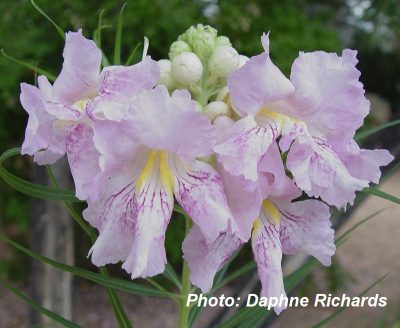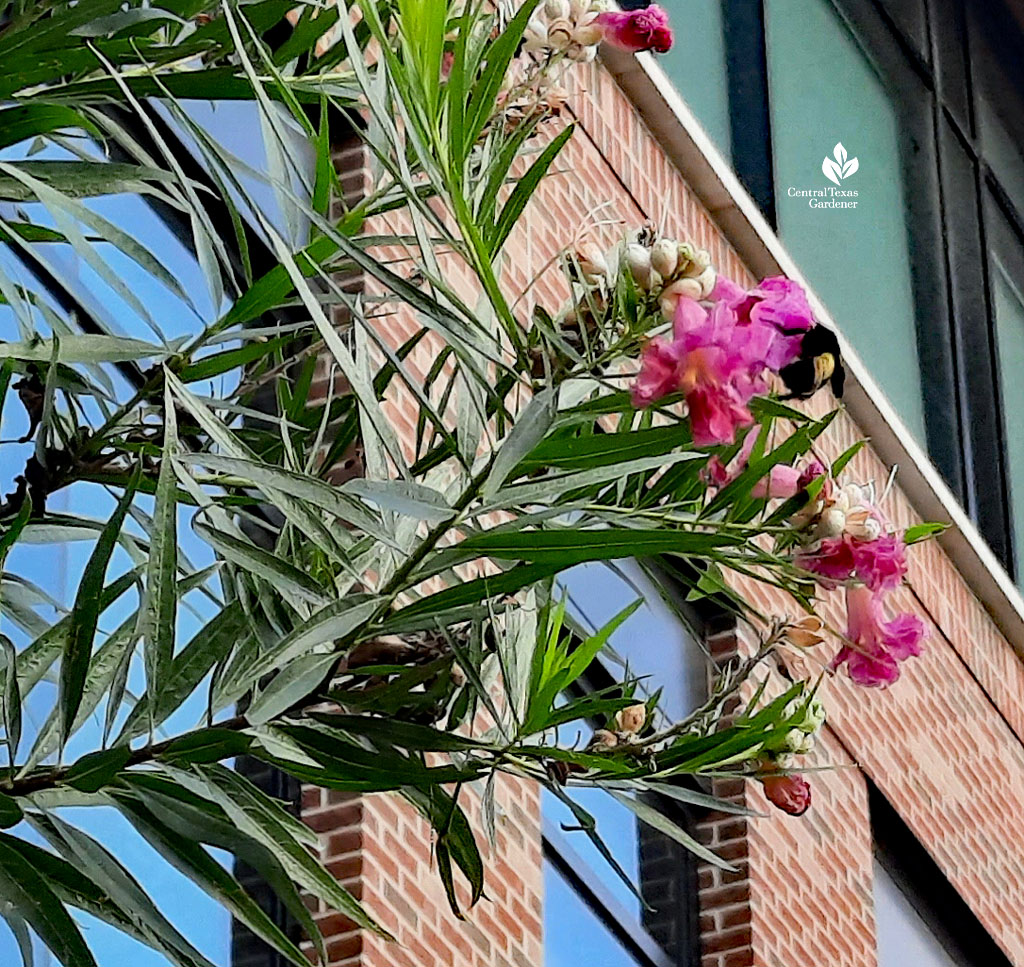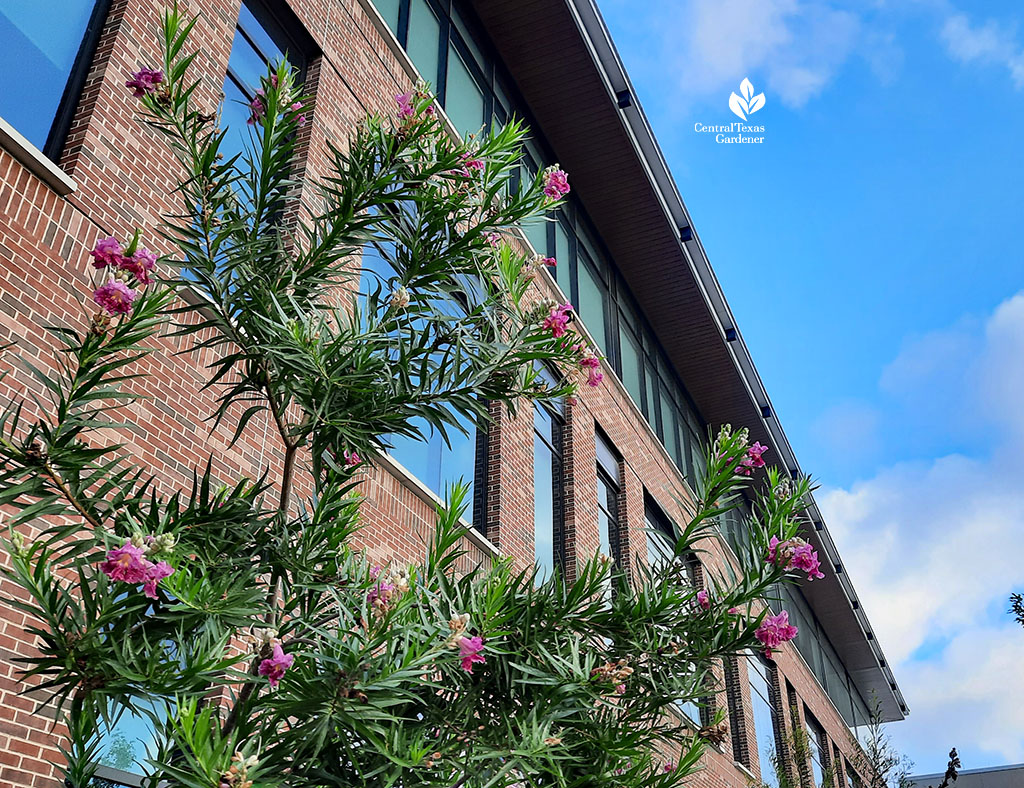Desert Willow
Chilopsis linearis

Desert willow is a gorgeous summer-flowering small tree. It gets its common name from its long, linear leaves and billowy resemblance to actual willow trees. It can range from fifteen to forty feet tall, though generally it’s on the smaller side to use as an accent tree. It’s similar to most other desert trees in that it can have a very shrubby growth habit, so you can actually leave it for a shrub if you like.
Its open growth habit and willowy canopy add a structural element to your landscape with wispy shade for plants underneath. So, it’s not a shade tree, but can shelter understory plants.
The trumpet-shaped flowers attract hummingbirds and bumble bees like crazy. The species desert willow has a nice, soft pink flower with streaks of yellow in the throat. ‘Bubba’ has dark pink flowers and ‘Lucretia Hamilton’ was bred for deep fuchsia. But there are many varieties.
The species desert willow makes tons of seed pods, so one great, attractive quality of the ‘Bubba’ cultivar is that it does not generally make seed pods so you don’t have that mess.

Desert willow needs full sun, but it’s not as picky about its soil. It’s extremely drought and heat tolerant and can virtually be ignored once it’s established. In extreme drought, just a little bit of water would keep this tree very happy.

Desert willow is deciduous, so it will be bare in the winter. It generally flowers in mid-to- late summer after some summer rains and we’ve had some heat.
It’s not a relative of actual willows but is in the same family as trumpet vine and Catalpa trees. Chilopsis and Catalpa trees were crossed at one point, leading to the Chitalpa. That species likes a lot more water and has trouble in the heat of our area.
categories:
